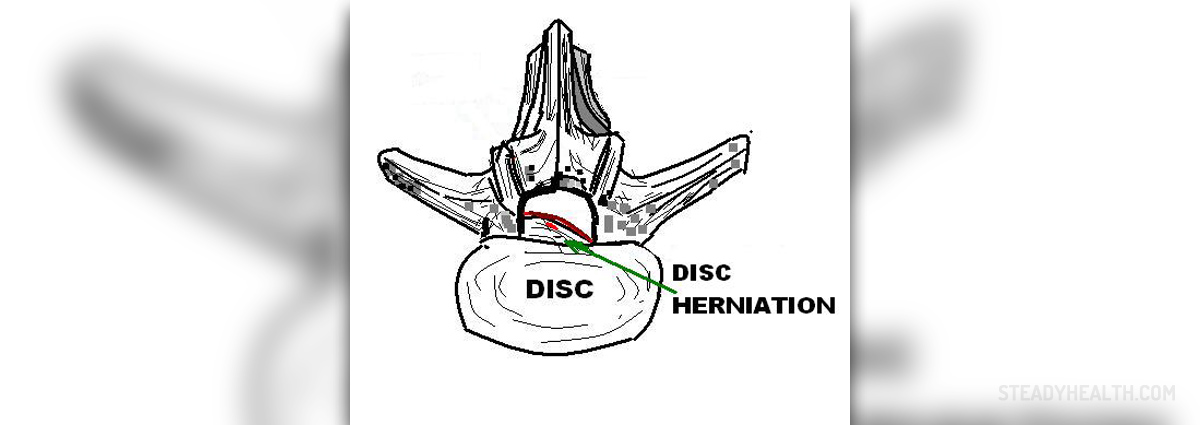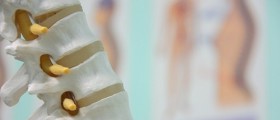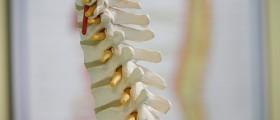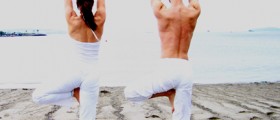Disc Protrusion Overview
There are a total of 24 bones called vertebrae that make up the spinal column.
Each pair of vertebrae has a disc that cushions them. They are soft and made up of a substance that is very water-like, which is called the nucleus pulposus, and another part called the annulus fibrosis and both act as shock absorbers for the spine.
When injuries occur to these discs that protect the vertebrae of the spine, a person can experience pain in the neck, back, arms or legs.
This is called a disc protrusion.

Sometimes the pain can result from an injury that was incurred by the spine or by bad posture and weak muscles that support the back.
These conditions can cause the annulus part of the disc to tear, which results in a disc protrusion, or a bulging disc, which most people refer to it as. When a bulging disc occurs, the nucleus releases through the tear made in the disc.
In the case of a disc herniation, the nucleus protrudes through the tear and becomes displaced.
If the nucleus pushes all the way beyond the disc it is known as an extruded disc.
Treatment Options
It is important to know what to do in the case of such spinal injuries and what the best course of treatment is since surgery is often recommended to fix these problems with are known to cause serious and chronic back pain that can completely interfere with a person’s everyday life.
Once such an injury occurs, it is absolutely vital to control all physical activities and get a lot of bed rest in a comfortable position that will put the smallest amount of pressure on the spine and help relieve the pain that the person is feeling.
The return to a normal routine of physical activity must be gradual and sitting for extended periods of time needs to be avoided, because when a person sits, he or she puts a massive amount of pressure on the spine.
- When bladder symptoms or progressive motor weakness are present, surgery is carried out as an emergency. In the absence of these symptoms, 75–90% of patients with acute sciatica due to a protruded lumbar disc experience resolution of symptoms without surgery.
- The spontaneous disappearance of a herniated lumbar disc has been recognized with the widespread use of magnetic resonance imaging (MRI).
- The management of herniated lumbar discs may involve non-operative and operative treatments. The initial treatment is non-operative and includes continued activity, analgesia, and physiotherapy.
- The microdiscectomy provides similar results to the standard discectomy, but, as yet, there is not enough evidence to draw firm conclusions on the percutaneous or laser techniques.
- The mechanism proposed for the reduction in the size of the herniated disc is an absorptive process that relies on neovascularisation and infiltration by inflammatory cells such as macrophages, granulocytes, and lymphocytes. It is also recognized that greater resorption of herniated discs occurs when there is a sequestered fragment.
There are medications that can be taken to ease the pain as well. Anti-inflammatory medication, muscle relaxants, and analgesics need to be part of the treatment because they will help to relieve the pain that is hindering everyday activities.
Surgery
However, when such conservative treatments are of no help any longer, then surgery will have to be discussed with the doctor.
There are many benefits of minimally invasive surgery when compared to traditional surgery.
The main difference and benefit are that there are hardly any risks involved in such surgical treatments and there are little to no complications involved either. Believe it or not, in many cases, a patient will be encouraged and even instructed to take long walks on the same day that the surgery is performed.
In traditional spinal surgeries for disc protrusions, a very long hospital stay is often involved and the patient will need a significant amount of time to return to normal activities after more traditional surgery.














-Causes,-Symptoms,-Diagnosis,-Treatment_f_280x120.jpg)


Your thoughts on this
Loading...